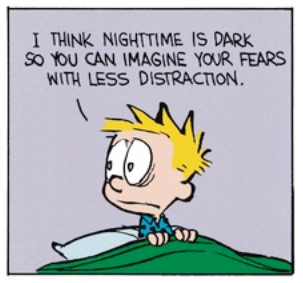While the saying goes that “life imitates art”, central bankers would likely rather not be compared to Monty Python characters (except perhaps would-be lumberjack Neel Kashkari). That aside, the way central bankers have handled inflation is oddly reminiscent of the knights in search of the Holy Grail. While policymakers previously looked at inflation (“It’s transitory!”) in the same way the knights looked at the Killer Rabbit of Caerbannog (“What’s he do? Nibble your bum?”), the inflationary rabbit has proven to have “a vicious streak a mile wide”. Now, after retreating to regroup and finding a suitable scapegoat explanation (“supply-side shocks”), the majority of central banks (with notable exceptions) are moving on to the moral equivalent of the Holy Hand Grenade, unsure if it will have the desired effect on the count of 3 or 5, dubious about the potential consequences, and in the meantime, concerned that, even after the grenade detonates, inflation could persist.
“Rising upside risks to inflation”
Across the pond, the ECB is clearly worried about ongoing price pressures. Diving into the dynamics behind its 75 basis point hike, the Monetary Policy Account (i.e., minutes) from the September meeting reveals that “while some policymakers made the case for a smaller, 50 basis point rate hike, a ‘very large’ number backed a bigger increase and eventually all 25 rate-setters settled on the decision”. This appears to have been motivated by a rather dire outlook on inflation. Beyond the worry that “recent developments in energy markets… suggested that headline inflation would not reach a turning point before the end of the year”, “The argument was made that the nature of inflation had started to become self-reinforcing, to the point that even a projected marked weakening in growth was not sufficient to bring inflation back to target”. This idea was reiterated a second time in the account. “It was maintained that the expected weakening in economic activity would not be sufficient to reduce inflation to a significant extent and would not in itself bring projected inflation back to target”. So, if weakening growth won’t do the trick, what’s the next thumb to be placed on the scale? Belarus appears to be taking the direct price control route, its president saying “from today, any price increase is prohibited” during a meeting of government ministers. In the meantime, the LME is considering “banning Russian aluminium, nickel and copper from being traded and stored in its system”, and strikes “and unplanned maintenance has taken offline more than 60% of France’s refining capacity… forcing the country to import more when global supply uncertainty has increased the cost” (Workers are demanding “a 10 per cent wage hike for 2022” among other concessions).
“Near- and long-term threat”
In the US, while the view on inflation appears to be less fearful, inflation momentum is still “concerning”, and consequently, the Fed message has been overwhelmingly hawkish. While some speakers have tried to temper their hawkishness, SF’s Daly remarking that the Fed needed to be “nimble and resolute” to get inflation back down to the target without “either doing too little or doing too much”, she admitted that the Fed would be “staying the course” in “restrictive territory” and would only downshift “when the data show what we need to see”. Previously an uber-dove, Kashkari said the Fed had “more work to do”, and Governor Waller added to the hawkish chorus in a speech today, saying that while he believes “the stance of monetary policy is slightly restrictive, and we are starting to see some adjustment to excess demand in interest-rate sensitive sectors like housing”, ”more needs to be done to bring inflation down meaningfully and persistently”. The Fed speakers have not, however, been uniform. Atlanta’s Bostic was more cautious (perhaps worrying that in “blow[ing] thine enemy [, inflation,] to tiny bits”, raising rates will cause collateral damage) and said that he “would like to reach a point where policy is moderately restrictive – between 4% and 4.5% by the of this year – and then hold at that level and see how the economy and prices react”.
Admittedly, the US hasn’t been jostled by the same level of food and energy turbulence as the EU (it’s hard to compete with some of the double-digit readings coming out of the Netherlands and Germany), but the outlook isn’t free from potential hiccups. In an echo of some of the problems visited on Germany and China, “low water levels” on the Mississippi have “halted shipments of grain, fertilizer and other commodities”, and, though it pales in comparison to some of the more dire scenarios included in the forecasts for the UK energy market, Energy Department forecasts call for a 7.5% jump in electricity prices for 2022 as some commentators expect “winter power and heating costs” “to be considerably higher than last year, which itself was a budget breaker”.





